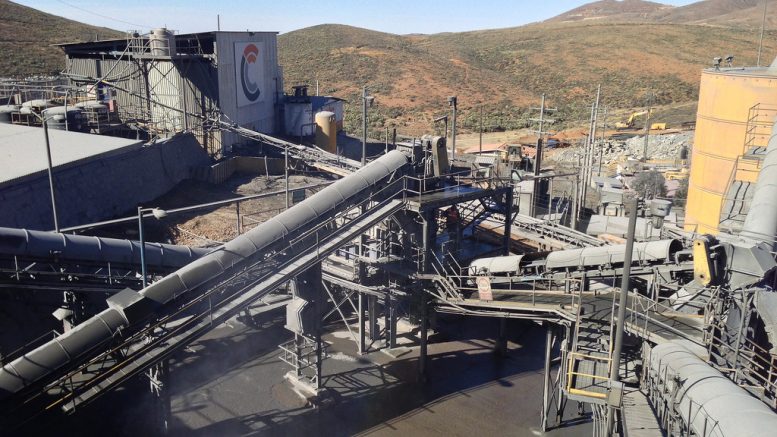The opportunity landscape for closing new precious metals streaming deals is growing faster than the competition, Wheaton Precious Metals (TSX: WPM; NYSE: WPM; LSE: WPM) CEO Randy Smallwood tells The Northern Miner.
On the back of the pioneering streamer’s unparalleled success as a niche mine development finance provider since its inception in 2004, the market has been flooded by copycats all trying to get a foot in the door. The company specialises in providing upfront capital for base metals projects in return for a portion of the future production of by-product silver and gold units.

Randy Smallwood
Yet, despite acute investor interest, a recent report by McKinsey & Company (https://www.mckinsey.com/industries/metals-and-mining/our-insights/streaming-and-royalties-in-mining-let-the-music-play-on) found streaming and royalty deals still only made up a fraction of overall debt and equity financing in the mining industry, accounting for just 1%-3% from 2017 through 2019. The data contrasts against the streamers having demonstrated their business model as delivering superior returns at substantially lower investment risk when compared with traditional mining equity investments.
Smallwood says more streaming and royalty firms continue to enter the market and are vying aggressively with each other to establish a foothold and finding that cornerstone asset around which to build a successful enterprise.
However, when it comes to the more substantial deals above the ~US$300-million-plus bracket, the market continues to be dominated by the three leading Canadian players —Wheaton, Franco-Nevada (TSX: FNV) and Royal Gold (NASDAQ: RGLD). He says the three companies regularly bump up against each other to pursue deals and create a healthy competitive environment.
“It works well since it gives us good opportunities. We’ve had some great success over the last six months with three transactions. I’m excited about a couple more deals coming down the pipe here pretty soon,” says Smallwood. “The opportunity set is bigger than it’s ever been.”
Smallwood believes streaming deals will continue to increase in relevance as the finance community becomes more comfortable with the model.
While the diversified majors are enjoying high levels of free cash flow right now, enabling them to finance their projects internally, the streaming model starts to make sense when an equity component is required as part of a project’s finance package.
“A streaming deal is by far the most attractive way to satisfy that equity component. And that’s what’s driving the increase in demand we’re seeing. Our tactical teams are busier than ever in terms of project reviews and we have lots of active files underway,” says Smallwood.
The reason for the surge in activity stems from these smaller base metals project proponents generally attracting substantively lower market valuations compared with the net present values of their respective assets. “That affords us the capacity of stepping in and delivering value,” he says.
A prime example of this dynamic was exemplified by Wheaton’s recent acquisition of 50% of Capstone Mining‘s (TSX: CS) silver output from its Cozamin copper mine in Zacatecas state, Mexico (https://www.mining.com/wheaton-pays-150m-for-share-of-cornerstone-silver-from-cozamin/). Smallwood notes Capstone shares immediately rose as a function of the company securing capex via a streaming deal for its corporate purposes.

Longhole drilling at Cornerstone Mining’s Cozamin mine in Mexico, which will provide a silver stream to Wheaton for the life of the project. Credit: Capstone Mining.
Given the firm price runs for most commodities in recent months and the record copper price of recent weeks, Smallwood says the base metals industry has “truly awakened” from a decade-long slumber.
“All of a sudden, we’ve seen a wakeup in terms of those base metal prices. There hasn’t been a lot of reinvestment into that space. This new price regime is all of a sudden driving serious interest in heavy investments back into the base metal space,” says Smallwood.
He flagged positive fundamentals for silver to continue to support the silver price, given the general scarcity of any substantial zinc and lead development projects which usually produce silver by-product.
Wheaton reported record revenue for the three months ended March, reporting US$324 million on the top line — a 27% year-on-year improvement mainly attributable to a 27% rise in the average realised gold-equivalent price.
Despite the higher income, headline earnings which adjust for special items, came in at US$161 million, or 36c per share, missing the consensus forecast by 1c.
The company posted operating cash flow of US$232 million, part of which it used to repay the outstanding portion of its US$2 billion revolving credit facility, leaving US$191 million in cash on hand at quarter-end — ample firepower with which to pursue growth opportunities.
As a result of the solid quarterly results, the company has increased its dividend to US14c per share for the third quarter in a row, a 40% bump compared with the first quarter of 2020.
Wheaton has guided for attributable 2021 production of 370,000-400,000 oz. gold, 22.5-24.0 million ounces of silver, and 40,000-45,000 oz. gold-equivalent comprising other metals, including the first deliveries in the quarter of cobalt from Vale‘s (NYSE: VALE) Voisey’s Bay operation in Newfoundland and Labrador, Canada, for a total of about 720,000-780,000 gold-equivalent oz., unchanged from previous guidance.
The company’s shares last traded at $53.16 in Toronto, capitalising it at $24 billion.


Be the first to comment on "Wheaton’s Smallwood sees deal opportunities growing faster than the competition"